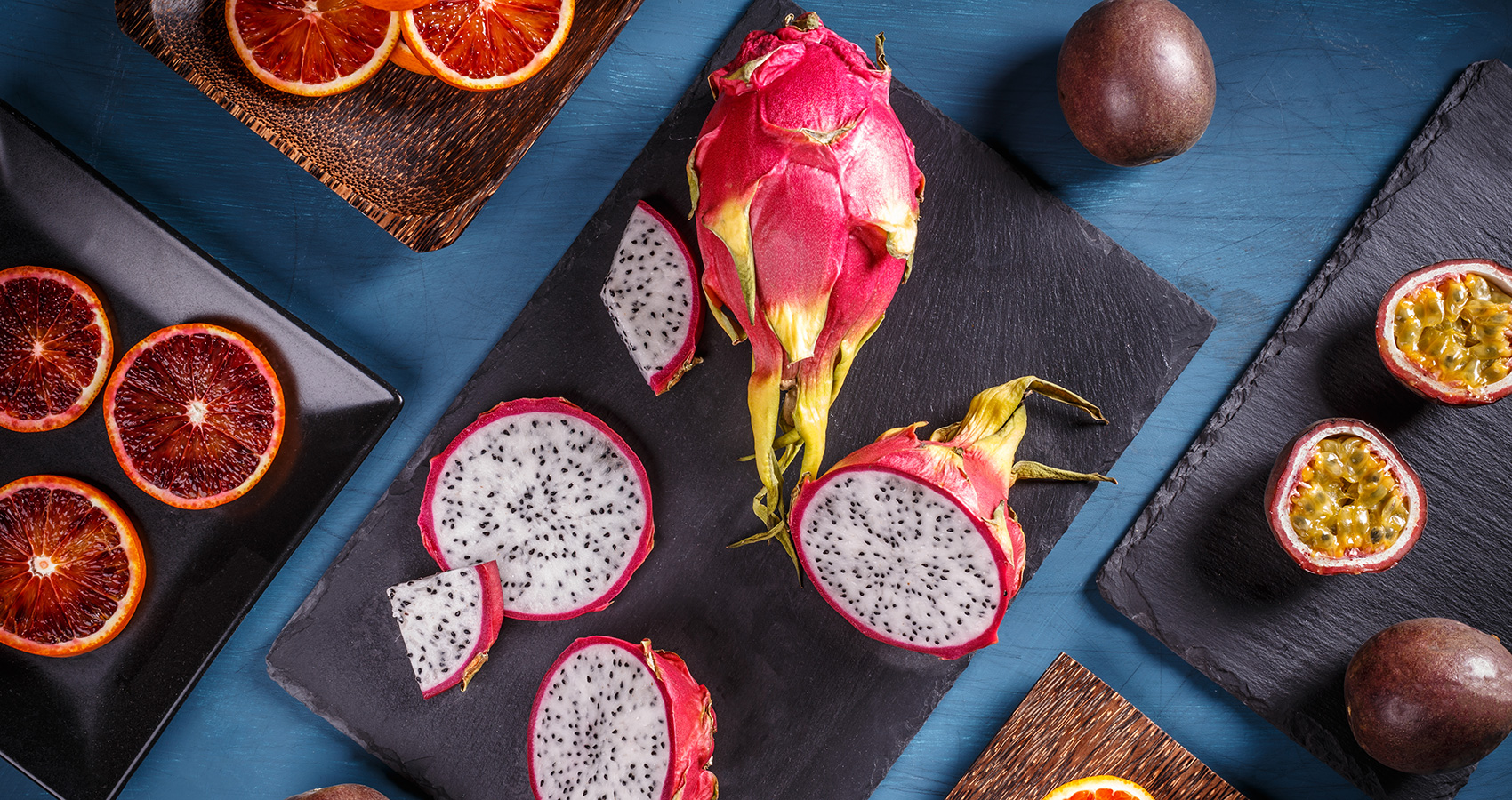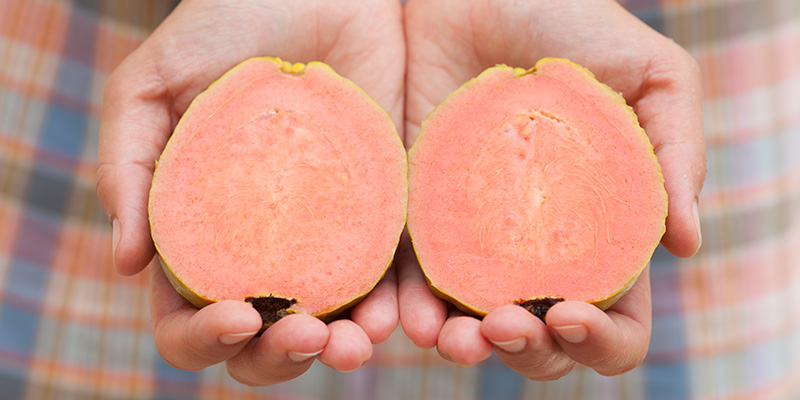Craving something light, refreshing, and fun in this hot weather? Take a trip through your grocery store’s produce section with an eye for some of the funky fruits you may pass up on a normal day. Life is good — why not treat yourself?
7 Tropical Fruits To Try This Summer
1) Jackfruit, Southeast Asia (esp. Bangladesh, Sri Lanka)
Jackfruit is a large, bland-colored, dimpled looking melon. Slice lengthwise in half and you’ll find it full of edible starchy seeds encased in irregular clumps of yellow flesh that can be eaten raw, cooked, dried or pickled. Their flavor is somewhat sweet, and nutritionally they are an excellent source of potassium and B6. Otherwise, a 1-cup portion of jackfruit is not a significant source of fiber (~3 grams), protein (~3 grams), or healthy fat (1 gram). Check out this recipe on how to make barbeque pulled “pork” using jackfruit as a vegan substitute!
2) Guava, Mexico/Central America
Guava are small green fruits with bright pink flesh. They should be nice and ripe when you enjoy them; they turn lighter in color when ready. If they aren’t quite there, wash thoroughly and leave out for a day or two at room temperature. The rind and seeds are both edible, high in vitamin C, but if you prefer you can just eat the flesh. Enjoy plain, blend into a smoothie, dice and add to a fruit salad, mix into coconut flavored yogurt, or blend and freeze into ice pops.
3) Feijoa, South America (esp. Brazil, Paraguay, Uraguay)
Feijoa look like limes, only smaller and more oval in shape. Unlike limes, they are sweet in flavor, reminiscent of apple and pineapple with a high level of acidity. One serving provides 40% of our daily recommended value of vitamin C! Quarter and eat them raw, add to a smoothie, squeeze them into water or seltzer, zest skins for stir-fry or vinaigrettes, or dice them into a salad.
4) Dragon Fruit (Pitaya cactus), Mexico/Central America
Dragon fruit looks like something straight out of a Pokemon app. Fiery bright pink with yellow spikes, its inside is pale white with tiny black seeds. Slice it in half and use a spoon or melon baller to scoop out the sweet, crunchy flesh and seeds (both of which are edible). A 3-ounce serving of dragon fruit (about a palm full) contains approximately 100 mg of calcium -about 10% of our daily recommended value. It is sweet and somewhat mild in flavor, similar to a pear. Enjoy it on its own, as a star in a fruit salad, part of a smoothie, a little sweetness on a savory cold side salad, or diced for a salsa.
5) Rambutan, Southeast Asia (esp. Indonesia, Malaysia)
These little hairy wonders look like sea urchins, appearing reddish or brown in color. Peeling the fruit reveals white flesh that is sweet and reminiscent of grapes in texture and flavor. Rambutan is high in manganese; a typical serving is 2-3 peeled and enjoyed raw.
6) Horned Melon (Kiwano), Africa
This beauty is going to be bright yellow-orange and spiky when you see it. Slice it open lengthwise and you’ll find sweet, mild, green seeds inside that you can spoon out and eat raw. Horned melon is high in vitamin C and magnesium.
7) Passion Fruit, South America (esp. Brazil, Paraguay, Argentina)
Passionfruit are small, round, and reddish in color. Seek out ripe fruit that is slightly wrinkled to know that it’s ready. Its flesh and seeds are edible; slice in half and scoop out the insides. Use to make a tropical flavored breakfast oatmeal with coconut milk, vanilla, and cinnamon. Mix into a yogurt or blend into a smoothie for a funky way to change up some old work week breakfast stand-bys.









